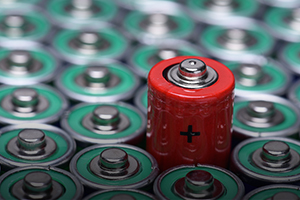100-Year Battery
 A prototype, non-rechargeable battery has been developed that can operate in standalone mode for up to a century. Designed for long-life, low-energy applications that require no maintenance, the battery could be used as an independent or auxiliary power source for devices such as sensors, sleeper transmitters, gas detectors and fire detectors.
A prototype, non-rechargeable battery has been developed that can operate in standalone mode for up to a century. Designed for long-life, low-energy applications that require no maintenance, the battery could be used as an independent or auxiliary power source for devices such as sensors, sleeper transmitters, gas detectors and fire detectors.
The technology is based on what is known as the betavoltaic effect – using beta radiation from decay of a radioactive isotope (nickel-63) to generate electrical current in much the same way that solar cells convert sunlight. Nickel-63 is a “mild” and clean radiator that decays into a stable copper isotope, so the batteries don’t need special recycling. The system is safe because, unlike harmful gamma radiation, beta rays do not penetrate deep into the human body. In addition, the radioactive nickel is shielded inside the battery to prevent radiation leakage.
One of the main advantages of Ni-63 is that its efficiency and power output actually increase in lower temperatures, so it can be used in settings where lithium ion batteries can’t, such as Arctic and Antarctic environments. The biggest limiting factor to widespread availability is the current high cost of Ni-63, however, it is expected that industrial production of the isotope would reduce cost of the battery by about 90 percent.
For information: Viktor Murashev, National University of Science and Technology MISiS, Leninsky Avenue 4, Moscow, Russia; phone: +7-495-638-4678; website: http://en.misis.ru/